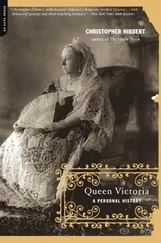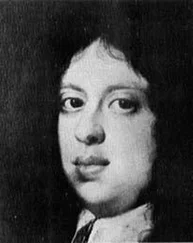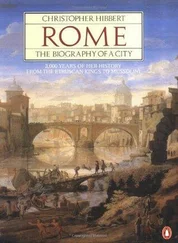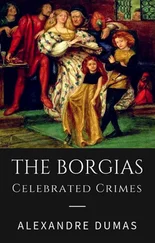Pietro Riario and Giuliano della Rovere, who had both followed their uncle into the Franciscan order, rapidly abandoned their vows to poverty and chastity once they were cardinals. Pietro, described by one contemporary as another Caligula, was the pope’s favourite; indeed, it was widely rumoured that he was in fact Sixtus IV’s son. With an income of over 50,000 ducats a year from his benefices, he could indulge freely in the luxuries of life and flaunt his mistress, whom he installed in his palace at Santi Apostoli, where her shoes, reputedly, were sewn with pearls. He died suddenly in January 1474, leaving debts of over 60,000 ducats, after suffering severe stomach pains that many thought were the result of poison but were more probably due to appendicitis. Giuliano now became Sixtus IV’s right-hand man in the college and started to build up his position at the papal court, where he would soon begin to rival Rodrigo.
Yet for all his persistent nepotism, Sixtus IV was a great benefactor to Rome and to the Roman people; and, largely by means of the heavy taxation of foreign churches and the sale of ecclesiastical offices, he was able to carry out numerous public works. Streets were paved and widened; at the same time the numerous conduits of ancient Rome, which had once brought fresh water to hundreds of the city’s fountains, were cleared and once again gave the Roman people a clean supply.
Hundreds of churches were repaired and rebuilt, so many indeed that Sixtus IV was hailed by his humanists as a second Augustus, following in the footsteps of the emperor who had found Rome built in brick and left it in marble. He sold off Paul II’s magnificent collection of valuable antiquities, for money or for political favour, and spent the proceeds on improving the city of Rome. A foundling hospital was established; new palaces appeared where desolate ruins had once stood; the city’s main market was moved to the Piazza Navona, the site of ancient Rome’s imperial circus, the infamous Stadium of Domitian.
The University of Rome, the Sapienza, was re-formed; in preparation for the Holy Year of 1475, the pope laid the foundation stone of the Ponte Sisto, standing up in a boat as he dropped several gold coins into the murky waters of the Tiber. Most memorably of all, it was Sixtus IV who was responsible for the Sistine Chapel, which was built for him by Giovannino de’ Dolci with its walls decorated with scenes of the lives of Moses and Christ by some of the most gifted artists of his time, including Botticelli, Ghirlandaio, Perugino, and Pinturicchio.
Sixtus IV had been quick to reward Rodrigo for his support in the conclave, promoting him to the cardinal-bishopric of Albano and giving him the lucrative abbey of Subiaco, which included the lordship of the surrounding area and a castle that would provide the cardinal and his family with a pleasing summer retreat. The pope also appointed him as papal legate to Spain, to sort out the tricky situation that had developed there regarding the consanguineous marriage of Ferdinand of Aragon and Isabella of Castile, which had already taken place using a forged papal dispensation, much to the fury of the archbishop of Seville, who opposed the union of the two Spanish kingdoms.
Rodrigo left Rome in May 1472 and received a rapturous reception in Valencia, his episcopal seat. In Spain he displayed his intelligence, tact, discretion, good humour, and confidence to do what was necessary to regularize the marriage and to negotiate peace with the archbishop, who was placated with a cardinal’s hat; he also gained Spanish support for another crusade against the Turks. He left Spain fourteen months later, but on his journey home his galley ran into a violent storm and was wrecked off the coast of Tuscany. He was taken to Pisa to recover from his ordeal, and while there he was invited as guest of honour to a banquet, where he met an attractive and intelligent woman some ten years younger than himself, named Vannozza de’ Catanei.
A courtesan of charm and discretion from a family of the lesser nobility, Vannozza de’ Catanei seems to have intrigued the cardinal from the very beginning of their acquaintance. So as to facilitate what was to become a loving and lasting relationship, Rodrigo’s confidential legal adviser and notary, Camillo Beneimbene, arranged for her marriage to a complaisant husband, an elderly lawyer called Domenico da Rignano, who could be relied upon not to make any unwanted demands upon his wife.
In 1475, a year after Rodrigo had made his appearance, dressed in the red robes befitting a cardinal, at the marriage of his mistress, she gave birth to a son, who was named Cesare — Sixtus IV showed his approval of his vice-chancellor by legitimizing the boy. Soon after this Vannozza’s well-rewarded husband died, and the widow gave birth to two more of Rodrigo’s children — another boy, Juan, a year younger than Cesare, and four years after that a girl, Lucrezia. Vannozza did not remain a widow long; she was married twice again to men selected by the cardinal and gave birth to Jofrè, yet another son for Rodrigo, and Ottaviano, who may or may not have been his progeny.
Certainly their good-natured mother profited from the arrangement, being able to establish herself in a comfortable house in Rome and to buy a plot of land near the Baths of Diocletian on which she had another house built. She also acquired a lucrative interest in three of Rome’s best inns, while her third husband, Carlo Canale, made a handsome profit from his appointment as governor of Rome’s prison, the Torre Nuova, where the incarcerated men were charged for such privileges as they could afford.
Vannozza’s were by no means the only children who were generally believed to have been fathered by Cardinal Rodrigo. There were at least three others, all older than Vannozza’s offspring, who were widely assumed to be his, although very few people in Rome knew who their mother was. Two of these children were girls — one of them, Gerolama, having been quietly married into an unassuming though noble family, died young; the other, Isabella, lived into old age, dying in the middle of the sixteenth century, an object of much curiosity that she haughtily ignored. The third was a son, named Pedro Luis after Rodrigo’s brother, and he was created Duke of Gandía but, like Gerolama, died young, having spent much of his short life as an apparently worthy officer in the army in Spain.
Around 1483, when Cesare was eight years old and his brother Jofrè still a baby, Rodrigo had taken his children away from their mother and placed them in the care of his cousin Adriana da Mila. Despite her evident charms and his affection for her, Vannozza’s background made her unsuitable for the upbringing of their family; Adriana, on the other hand, was a Spanish noblewoman and had married into one of the most powerful clans in Rome, the Orsini. In 1489 her son, Orsino Orsini, was married in Rodrigo’s palace in Rome to Giulia Farnese, a beautiful nineteen-year-old girl of very modest fortune. Giulia — ‘la Bella’ as she was known throughout Rome — now became Rodrigo’s new mistress, while her husband withdrew to his family’s country estate at Bassanello.
Rodrigo seemed to be obsessed by the Farnese girl, his lovely carefree young mistress who now lived in a house shared with Adriana da Mila and the children of the pliable, good-natured Vannozza. Indeed, he appeared, for the first time in his life, to be capable of an intense jealousy, even of Giulia’s tiresome husband, whom she insisted on going to see in the country from time to time, provoking Rodrigo to write such letters as this:
We have heard that you have again refused to return to us [from Bassanello] without Orsini’s consent. We know the evil of your soul and of the man who guides you but we would never have thought it possible for you to break your solemn oath not to go near Orsino. But you have done so… to give yourself once more to that stallion. We order you, under pain of eternal damnation, never again to go to Bassanello.
Читать дальше











